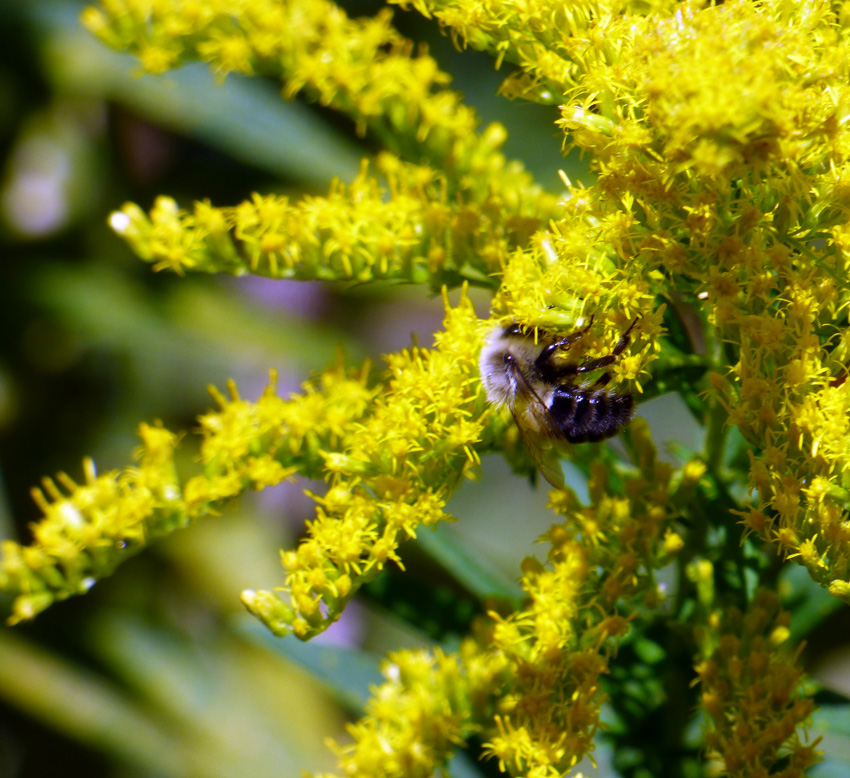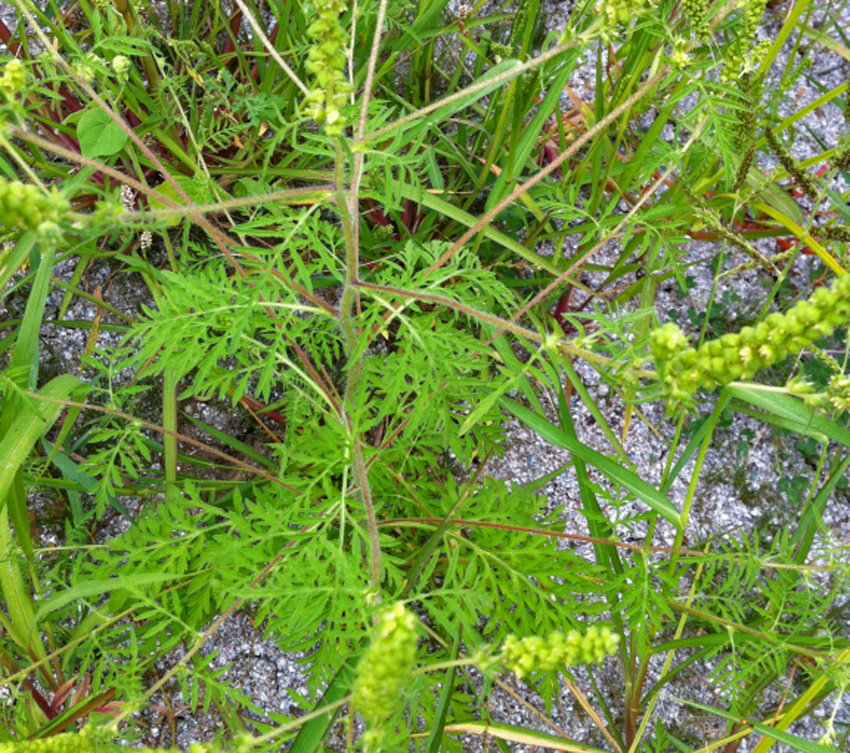
Ah! Fall in the Ohio Valley! Ah-CHOOO!
Many people blame their sneezing and watery eyes on the beautiful goldenrod flowers that bloom this time of year, but that’s not really the case. If you’re among the 10% to 30% of Americans who suffer from hay fever remember that most cases of hay fever are caused by an allergy to fall pollen from plants belonging to the genus Ambrosia — more commonly known as ragweed.
Goldenrod and ragweed bloom at the same time and often grow together. In the fall, goldenrod’s flowers are bright yellow and ragweed’s flowers are pale green. Ragweed’s flowers blend in with the leaves and not noticeable. When ragweed releases its pollen, people blame goldenrod because of its bright yellow flowers. Ragweed’s pollen is lightweight and spread by the wind. Goldenrod’s pollen is heavy and sticky and can’t be blown by the wind. It is pollinated by insects. Unless you put your nose right into a goldenrod plant and sniff, you shouldn’t be affected by its pollen. But few people even recognize a ragweed plant if they see it! Because common ragweed doesn’t tolerate frequent cutting, it’s not usually a problem in mowed lawns. It can grow in gardens, but is most common in unmowed fields, along roadsides and among agricultural crops such as corn and soybeans.
 There are 17 different species of ragweed in the U.S. These plants are most common in the rural areas of the Eastern states and Midwest, but are found throughout the U.S. Scientists estimate that a single ragweed plant can release one billion grains of pollen over the course of a single ragweed season. And the grains are so light that they float easily even on gentle breezes. Pollen has been detected as far as 400 miles out to sea and up to two miles up in the atmosphere!
There are 17 different species of ragweed in the U.S. These plants are most common in the rural areas of the Eastern states and Midwest, but are found throughout the U.S. Scientists estimate that a single ragweed plant can release one billion grains of pollen over the course of a single ragweed season. And the grains are so light that they float easily even on gentle breezes. Pollen has been detected as far as 400 miles out to sea and up to two miles up in the atmosphere!
Here’s what to look for:
- Leaf. Each common ragweed leaf is made up of numerous leaflets that grow along both sides of a leaf stem, or petiole. The leaflets are deeply divided, making the leaf look feathery or fern-like. The leaflets at the base of the leaf are longer than those at the tip, giving the leaf a triangular shape. Full-grown leaves are up to six inches long and four inches wide. The undersides of new leaflets are hairy; older leaves are usually smooth, but can be hairy.
- Flower. Starting in mid- to late summer, common ragweed produces cylindrical flowerheads at the tips of its upper branches; each flowerhead is up to four inches long and is made up of numerous small flowers. As the flowers mature, they change from green to yellow or brown. Male flowers produce pollen that causes hay fever — a single plant can release more than a billion wind-carried pollen grains.
- Stem. Common ragweed can grow to six feet tall, although two to three feet is more common. The stems are light green or pinkish, hairy and branched.

